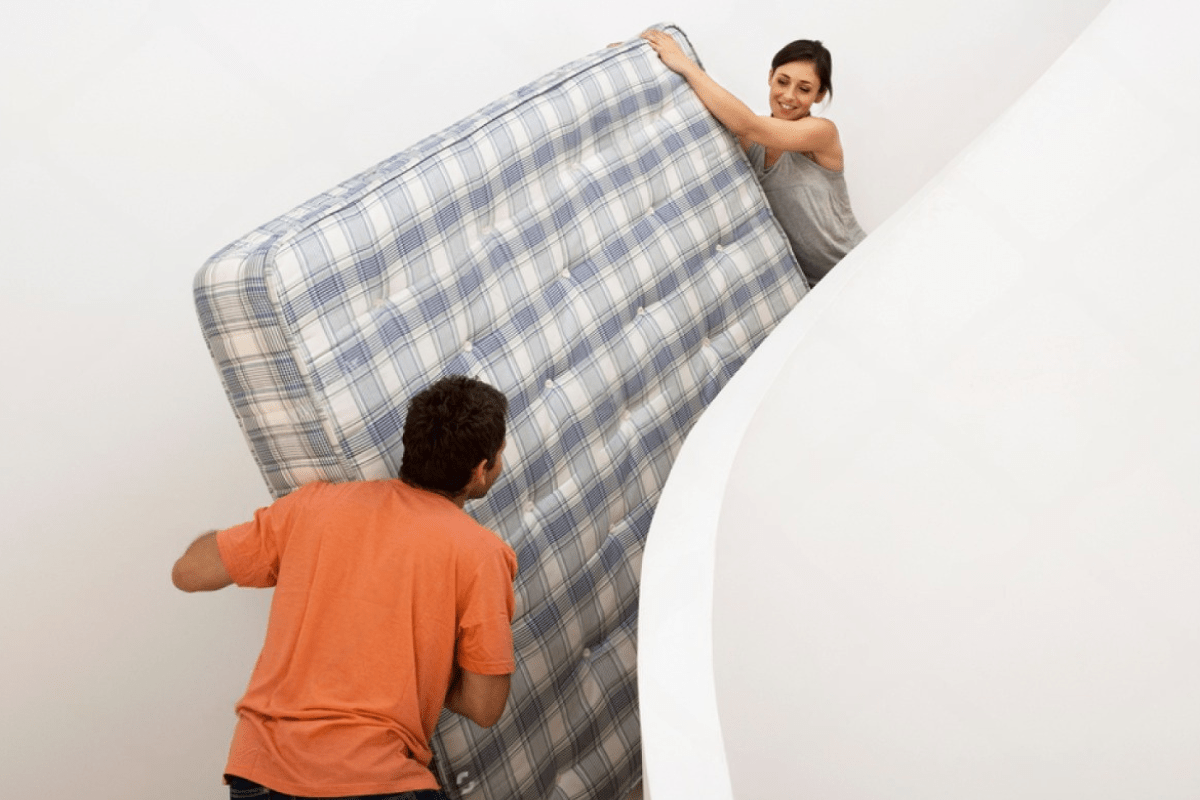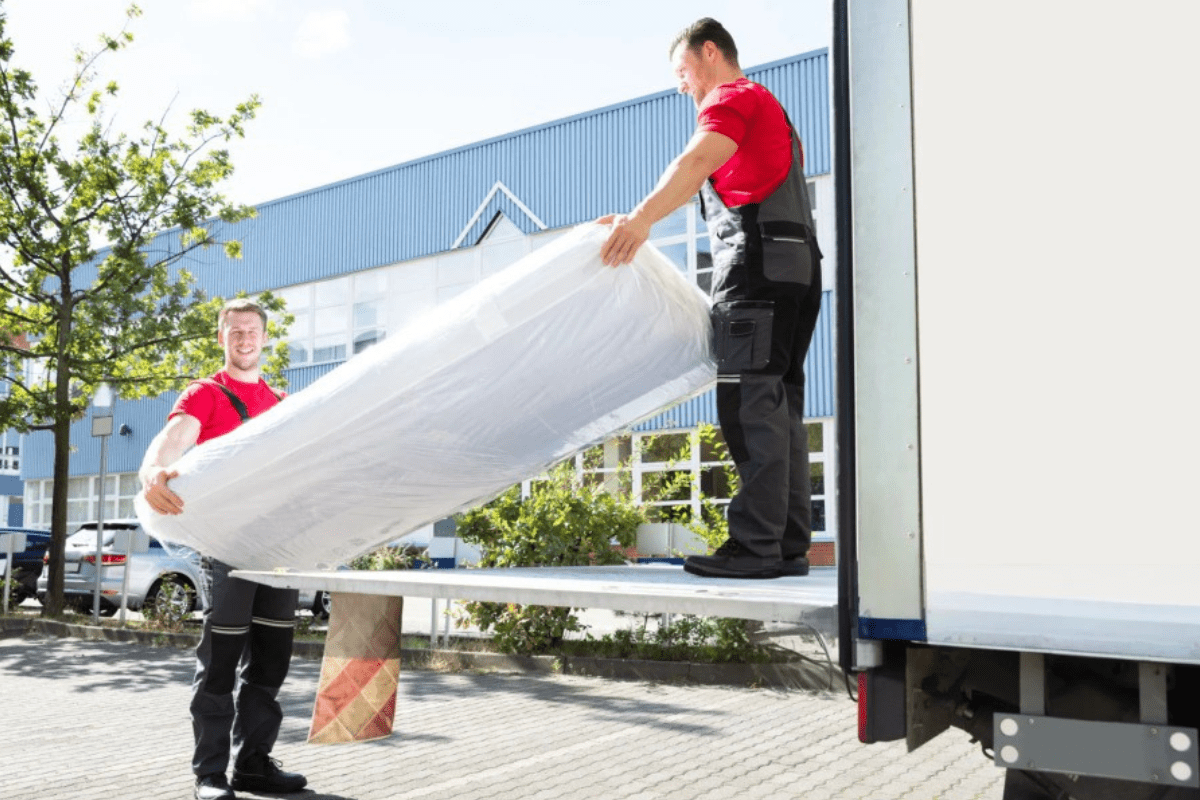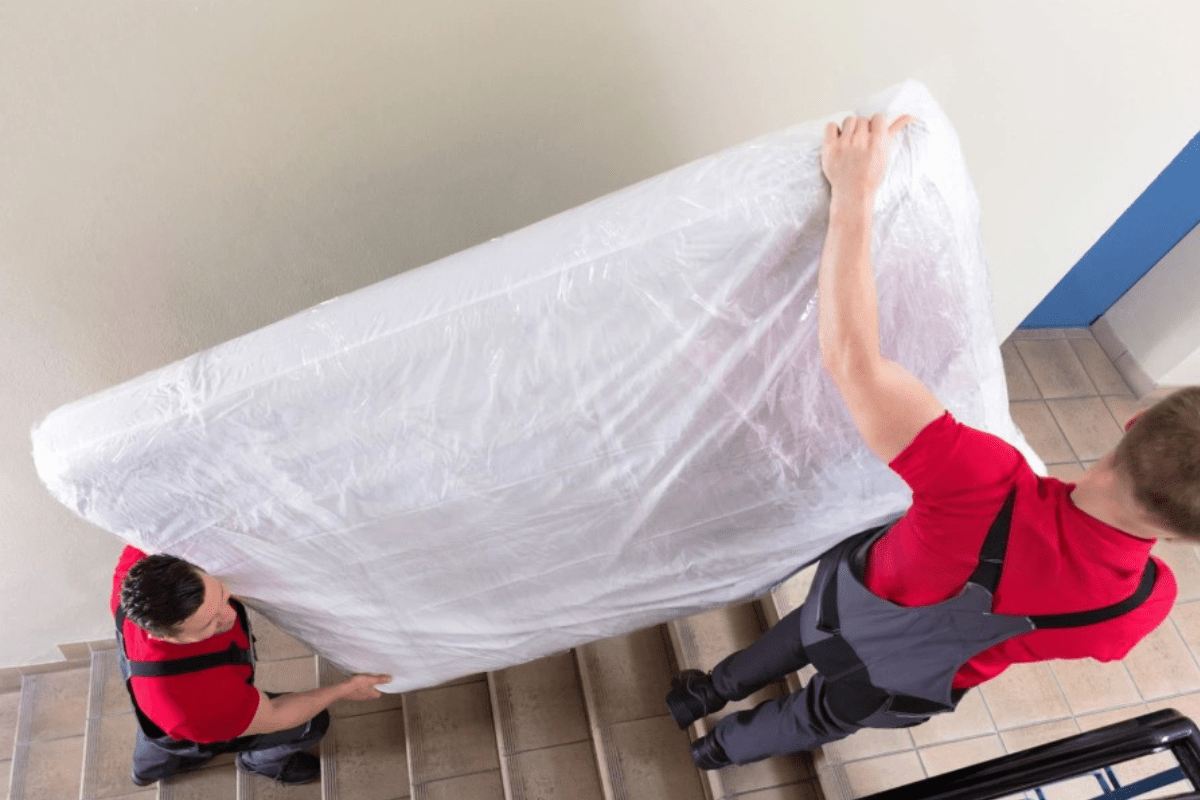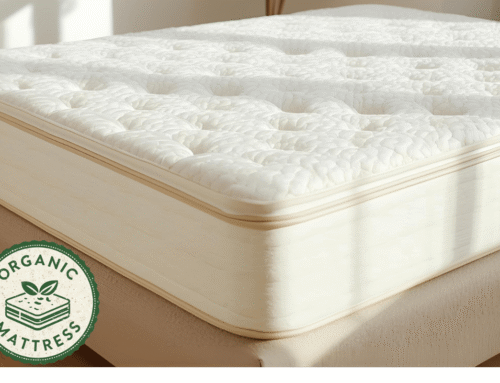Moving a memory foam mattress can be more difficult than people expect. It’s not just heavy—it’s floppy. The mattress bends and folds while you’re trying to carry it, which makes it hard to hold on to. If you drag it across the floor or try to squeeze it through a doorway, it might tear or get squished unevenly.
Some people try folding the mattress to get it through tight spots. That might work, but it can leave marks or dents that take weeks to go away. A better way is to use a mattress bag with handles or straps. That helps keep the shape of the foam and makes it easier to carry. It’s also best to have someone help you lift it. That way, you don’t hurt yourself or damage the mattress by dragging it.
Memory foam mattresses are made to shape around your body. Some have cooling gel too. Most of them last between 7 and 10 years. Thickness and price vary, and when you buy a new one, it usually needs around two days to fully expand. Knowing these things helps you take better care of it, especially when moving.
This guide walks you through how to move your mattress without damaging it. You’ll learn what tools to use, how to wrap it, and how to keep it clean during the move. It also covers how to lift it safely so you don’t hurt your back.
Key Takeaways
- Memory foam mattresses are bulky and flexible, which makes them hard to carry without risking damage or awkward bending.
- A thick mattress bag with handles or straps helps protect the foam and makes lifting and moving much more manageable.
- Keep the mattress flat during transport to prevent sagging, folding, or permanent shape loss.
- Ask a friend for help or use a dolly to avoid injuries and stop the cover from tearing during the move.
- Strip off all bedding and wrap the mattress tightly to keep it clean and dry while navigating hallways or stairs.

Why Memory Foam Mattresses Are Challenging To Move
Because of their softness and flexibility, memory foam mattresses are difficult to transport. The material sags or folds over itself when being transported because it lacks a stable internal structure. Its floppy quality makes it prone to slipping or bunching up, particularly at tight corners or on stairs.
Additionally, if folded or bent for an extended period of time, they lose their shape. There may be dips or unequal support if the foam doesn’t bounce back. The fabric may strain or tear if the mattress is kept upright or if it is dragged over the floor, particularly near the borders.
To fit through doors, some individuals attempt to tie them up or roll them up, but this usually causes more issues than it fixes. Moving one safely still requires at least two people, but using a mattress bag and a plastic cover helps protect the surface. With these, a little perseverance goes a long way.
Because memory foam mattresses are delicate, it’s critical to compress them correctly and follow storage and disposal guidelines to prevent damage and maintain their condition. It’s also critical to understand when to replace them and what happens if you sleep on them before the 48-hour mark to prolong their lifespan and comfort.
Supplies You’ll Need To Move A Memory Foam Mattress
Given how large and flexible a memory foam mattress may be, moving one isn’t always easy. For this reason, it’s a good idea to use plastic wrap or a sturdy mattress bag. During the move, it maintains the mattress dry and clean. If left exposed, dirt, moisture, or anything sharp could quickly destroy the surface.
Strong rope or ratchet straps are useful for preventing the mattress from flopping around. Some individuals struggle with it in confined spaces like corridors or stairwells after attempting to wing it without strapping it down. Better control is provided by those straps, particularly when used in conjunction with a dolly for longer hauls or heavy lifting.
After everything is loaded, a few additions make things easier. After the relocation, scissors or a box cutter are useful, and packing tape holds the plastic wrap in place. Unpacking can become a pain if these basic items are overlooked. Avoiding the minor errors that make moving more difficult is more important than over-preparing. A memory foam mattress’s condition can be preserved during and after the relocation by taking into account how to clean it and how to make it firmer and cooler.
Remove Bedding And Clear The Space
Start by removing all the bedding, such as sheets, pillowcases, and toppers, so the mattress is fully exposed. It’s easier to move things around without fabric getting in the way or holding moisture. Any damp bedding should be washed immediately to prevent lingering odors or bacteria.
Clearing the area around the bed helps avoid unnecessary hassle during cleaning or moving. Items on the floor like shoes, laundry baskets, or chargers often get overlooked but easily trip people up. It’s safer and less stressful to have everything out of the way.
If the mattress needs to be moved, especially through stairs or narrow spaces, mapping out the path ahead saves time. Doors might need to be opened fully, rugs rolled away, or furniture shifted slightly. That extra bit of planning avoids awkward lifting or getting stuck mid-hallway. Proper cleaning and care are important before moving, including removing urine and other stains from a memory foam mattress and drying it thoroughly to prevent moisture buildup.

Use A Proper Mattress Bag
Memory foam can absorb moisture and break quickly, so using the right mattress bag helps keep it safe throughout a move. Compared to regular plastic, high-quality bags are usually thicker, more resilient, and water resistant. The smallest snag causes thin wrap to tear, despite its seeming convenience.
As a backup, some have used thick plastic wrap or painter’s tarps, but securing them requires more work. Although duct tape effectively seals the edges, it’s crucial to check again for any loose corners or holes. The mattress may be damaged in the truck or gather dust if the seal isn’t well sealed.
It is also easier to handle memory foam when it is firmly wrapped because it is heavy and cumbersome to carry. Damage frequently results from dragging it around the floor without protection. When people discover stains or grime that won’t go away, they frequently regret skipping this step.
Keep It Flat Or Rolled
Folding a memory foam mattress isn’t a good idea. The structure inside can crack or lose shape, especially in mattresses with thick or layered foam. Some people think folding saves space, but it usually leads to permanent creases or sagging that won’t bounce back.
Laying it flat is safer, especially during transport. A moving van or truck with enough room is perfect for this. Keeping it flat helps maintain its original support and comfort without putting extra pressure on the core materials.
Some vacuum-sealed models may be rolled, but not all are designed for that after unpacking. Only roll it again if the brand specifically says it’s okay. For those that can be rolled, a loose ratchet strap can help hold the shape, though anything too tight might crush the foam and affect how it feels later on. To maintain the mattress’s shape and avoid dips, paying attention to how often you should rotate it and how to fix the dip in it helps keep it in good condition.

Carry With A Buddy
Particularly for a single individual, memory foam mattresses are heavier than they appear. A queen-size mattress can easily weigh more than 70 pounds and sag like it has no backbone. Lifting it by yourself typically results in minor injuries or frustration.
Having someone hold the other end while maintaining its upright position on its side is beneficial. It’s the ideal angle for navigating tight spaces like stairs or corners. However, if you leave it folded or sagging for an extended period of time, it may crease uncomfortably.
Although it may seem simpler, dragging typically results in the fabric being torn at the bottom or snagged on something. Friction against flooring is not intended for that delicate outer cover. A mattress cover or bag gives protection and helps you avoid many regrets later.
Use A Moving Dolly For Long Distances
Using a dolly can significantly simplify the process of moving a mattress, especially when navigating through elevators, long corridors, or loading it onto a moving truck. Placing the mattress flat on the dolly prevents the foam from being bent or folded unnaturally. This method is also much easier on your body compared to manually carrying or dragging the mattress.
For optimal support, particularly with larger mattresses, it’s best to use a flat dolly with a wide base. While some might be tempted to stand the mattress upright to save space, this can lead to sagging or twisting during transport. Keeping the mattress flat and centered on the dolly ensures a smoother move.
People who have moved by themselves or in cramped spaces often find this approach more practical. It reduces the risk of damaging the mattress and makes it easier to maneuver through tight spaces. The increased control over the mattress’s movement results in less physical strain and fewer logistical headaches during the moving process.
Tips For Moving A Memory Foam Mattress Upstairs
When moving a memory foam mattress up a flight of stairs, it’s crucial to have at least two people to manage its bulk and weight safely. Turning the mattress on its side is often the best approach for navigating narrow stairwells, as this orientation allows for easier passage through tight spaces without risking damage to the foam.
It’s important to maintain proper form while lifting and carrying the mattress. Keep your back straight and bend at the knees to reduce the risk of injury and minimize strain on your body. If the mattress is enclosed in a protective cover, you can use this to your advantage by gently sliding it along edges to navigate corners more easily without causing harm to the mattress.
In cases where the stairwell is particularly tight, consider temporarily removing stair railings or doors to create additional space for maneuvering the mattress. Planning ahead and clearing potential obstacles from your path can significantly reduce frustration and make the entire process smoother. By following these guidelines, you can make moving a heavy memory foam mattress upstairs a more manageable task.

Load The Mattress Flat In The Truck
When moving a mattress, it’s crucial to keep it flat during transport to maintain its shape and prevent any warping. This is especially important for foam mattresses, which can easily sag or develop creases if left standing upright for extended periods. Even a few hours in an improper position can be enough to compromise the mattress’s structure.
To protect your mattress during a move, it’s best to place it on top of other items rather than wedging it between boxes or furniture. Foam mattresses are particularly susceptible to uneven pressure, which can affect their comfort and support. Keeping the mattress flat also helps stabilize it during transit.
You can use lightweight items like pillows or sleeping bags to surround the mattress and minimize movement. However, avoid placing heavy objects directly on top of the mattress, as this can cause dents or compress the foam. The ideal setup is a clean, flat surface in a truck bed or van, allowing for easy loading and unloading without the need for bending or stacking the mattress.
Final Thoughts
A memory foam mattress must be moved carefully to maintain its comfort and shape. Its life may be shortened by irreversible damage caused by improper handling. The procedure is less stressful and goes more smoothly when a protective cover is used and assistance is requested.
Because bending can cause creases or weaken the foam layers, the mattress should never be folded and should always remain flat. It is important to keep it away from moisture and dirt, therefore properly wrapping it helps keep it safe while being transported. Particularly for heavy mattresses, the effort can be lessened with the use of tools like dollies or ratchet straps.
By following these instructions, you can make sure the mattress will arrive in good shape and be prepared for a nice night’s sleep. Long-term upright storage can cause the foam to deform, therefore avoid doing so. Over time, comfort and durability are maintained when these safeguards are taken.







